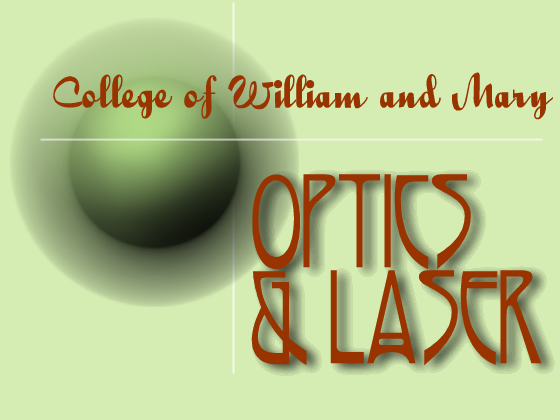
| |
| Home |
| Contact |
| Directions |
| Research |
| People |
| Publications |
| Photos |
| myWM |
Control of Magnetic Contrast |
In this project, we clearly separate the L- and T-component of MSHG by studying the anisotropy and the two-jump hysteresis loops from a single-crystal Fe film. Moreover, we developed formulas for the two-jump switching loop to extract the ratios of magnitude and the phase differences between magnetic and non-magnetic components for both L- and T-MSHG. This new effect enhances the sensing of magnetic switching, which has potential usage in quaternary magnetic storage systems because it enables the read-out of all four magnetization states from crystalline iron with high contrast ratio, and it is also of interest for bio-chemical sensor applications due to its very high surface sensitivity and simple structure.
 |
|---|
Due to the cubic magnetic anisotropy, there are four magnetization states of the single-crystalline Fe, which are two easy axes ([010] and [110]) and two hard axes ([110] and [-110]). The two-step switching of the magnetic hysteresis loops of transverse and longitudinal components for MSHG and MOKE can be studied simultaneously. If a small external magnetic field is applied along the longitudinal direction, i.e. the hard axis [-110], the magnetization can be easily switched between the easy axes along the longitudinal direction. But a large external magnetic field is necessary for the switching in the transverse direction.
 |
|---|
There is no magnetic contrast at the angle of total reflection (θ = 40°). For θ = 41°, ATR just begins, the hysteresis loop shows clear contrast with only the L-component switching at H = 5 Oe. The switching of T-component at H = 40 Oe begins to appear at θ = 41.5°, but the L-component still dominates the switching. With increasing incident angle (θ = 47.5°), the T-component becomes more enhanced, and eventually by θ = 52.5°, where the reflection is very small and close to the bottom of the ATR curve, the T-component dominates the hysteresis loop. For SP-enhanced MOKE, at θ = 41° and θ = 41.5°, the T-component is negligible. At larger angles, θ = 47.5° and θ = 52.5°, the T-component becomes enhanced but remains at a relatively low level as compared to the L-component. This important observation demonstrates the large variation of L- and T-component in MSHG, which is absent in MOKE. There is no such huge effect for MSHG under normal reflection geometry or MSHG under Kretschmann-Raether configuration with S-polarized fundamental field. The T- and L- magnetic contrast for two-jump hysteresis loop can be defined as:
 |
|---|
To elucidate the origin of the large variation in the MSHG contrast ratios, we studied CT and CL as a function of the angular position α of the analyzer (α = 0 corresponds to p-polarization). The magnetic contrasts can be expressed as:
where kT and kL are the ratios of magnitude between the magnetic and non-magnetic MSHG response for T- and L-magnetization components, both of which are composed of fundamental fields and corresponding effective susceptibility tensors. φT and φL are the phase differences between the magnetic and non-magnetic MSHG response for T- and L-magnetization components, respectively. We note that when kT = 0, the expression for CL becomes identical to the one for the one-jump MSHG hysteresis loop measured in the L-geometry. Furthermore, kT and φT can only be obtained from the two-jump MSHG hysteresis loop, because the equations above become meaningless without kL and α.
 |
|---|
The figure above shows the ratios of magnitude and phase differences as a function of incident angle under ATR condition for T- and L-magnetization components, respectively. The ratios kT and kL hardly change within experimental errors and hence cannot account for the large variation. In contrast, φL exhibits a large monotonic increase from 72° to 90° over the ATR range, while φT decreases from 88° to 77°. This trend is consistent with the large decrease of CL and the steady increase of CT with increasing incident angle under ATR. Therefore, the large variation of magnetic contrast originates from the change of relative phases caused by SP. The phase difference between magnetic and non-magnetic components of MSHG signal is known to be related to the relative orientation of magnetization and the wave vector of fundamental fields. Since the L- and T-magnetization components are normal to each other, CT and CL display opposite trends.
References:
- Wei Zheng, Aubrey T. Hanbicki, Berend T. Jonker, and Gunter Lüpke, Control of Magnetic Contrast with Nonlinear Magneto-Plasmonics, Nature Scientific Reports 4, 6191 (2014).
Funding: DOE
|